December 2024, no. 142
Seven Oceans Simulator centre
There are so many highlights over his 33 years, he laughs. But to name two; in 2018, MARIN performed tests for its 10,000th model and of course, the opening of the new Seven Oceans Simulator centre in May 2024.
The SOSc, Bas explains, links the high-tech side of marine hydrodynamics and simulations with the behaviour of people on board. “From a purely technology, knowledge driven institute, we have really developed towards a more crew-centred approach for smart and safe shipping. The SOSc is a link between the design of the ship and its actual operation, and the crew is in a central position. By involving the crew in the operation of the design, the resulting ship is much safer and effective.”
After many highlights and 14 years of directorship, Bas now embarks on the next chapter of his career. "I am handing over the helm of MARIN with full confidence in my successors Olaf Waals and Hannes Bogaert.”
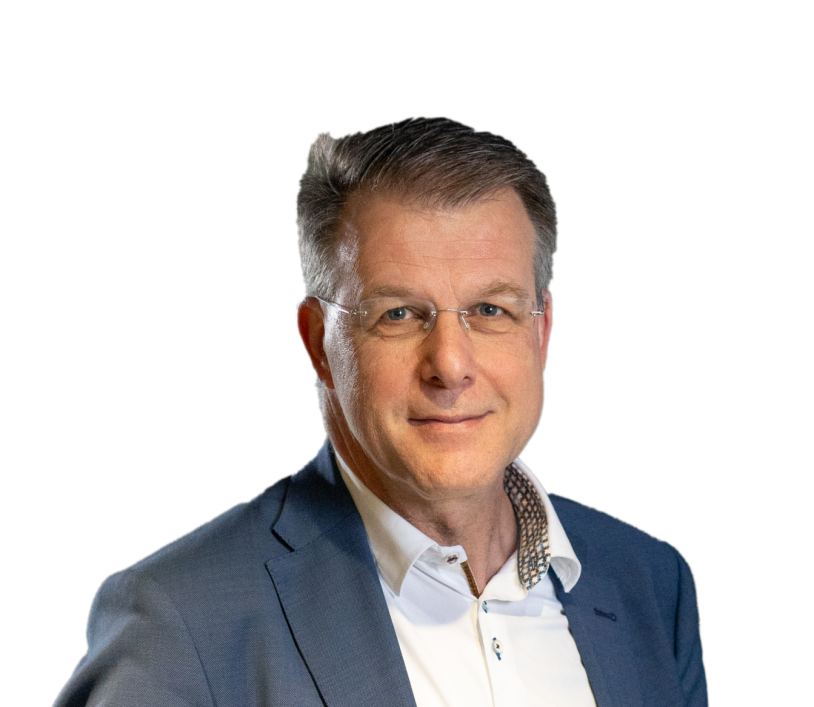
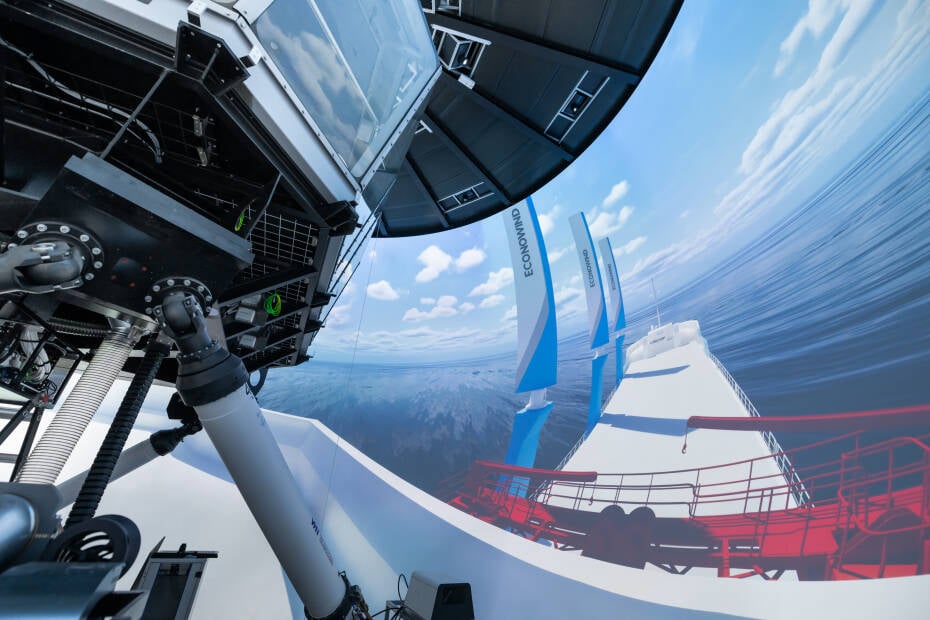
The two directors have also spearheaded the development of the BlueLabs and SeaLab. BlueLab is examining wind-assisted propulsion and the increasing scale of wind turbines, while the SeaLab aims to improve MARIN’s onboard field lab capabilities.
“Instead of only being aboard and collecting the data, step by step, we are starting to focus more on taking on an advisory role about how performance could be improved,” emphasises Hannes. “It is not just about having the data, but it is how it’s used for the design and to improve operations.”
Although the new directors will take on slightly different leadership roles, with Olaf involved with the external relationships with stakeholders and Hannes focusing on knowledge development and internal competencies, the two are very much in one line about their vision for MARIN as it approaches its 100th year.
Reflecting on his major drive when he took on the role of President, Bas comments: “When I became President, we were a very strong hydrodynamic service organisation, and we were very good at answering clients’ questions.
“But I also realised we were answering their questions for today, but probably not for tomorrow. I hope in my time we have developed a client-oriented organisation that answers the broad maritime questions of today, tomorrow and the day after that, to make shipping more safe, smart and clean and to contribute to a sustainable use of the seas!”
Anticipating future developments
Basically, you can have all the knowledge in the world, but if it doesn't result in better ships, it is meaningless, he stresses. “We kept our hydrodynamic expertise, but broadened our research to zero emission power trains, safe and smart shipping, and maritime AI applications.
“We started with a certain development and at that moment people said, ‘you're crazy!’ this is never going to work.” But Bas points out that one of these ‘crazy’ ideas was floating wind turbines in 2003, more than 20 years ago. MARIN’s vision meant that it has been able to stimulate the sector to move in that direction. And now, 50% of the projects in its Offshore Department are related to floating wind turbines. “If we did not make that decision 20 years ago, we would not be leading this development now.”
Floating islands, floating solar cells, AI
Floating mega islands, floating solar cells, AI, are other examples. “People are starting to realise that there are possibilities. As a research institute, it's your responsibility to develop things which the industry needs now but also in the future. It’s important to stay ahead of industry, I think we have that responsibility.”
Another MARIN initiative Bas is very proud of is its work concerning the loss of containers at sea. Initially working with the Dutch Safety Board and then broadened out to the TopTier project, MARIN’s efforts culminated in the IMO changing its procedures and guidance, ultimately making the maritime industry safer.
President Bas Buchner looks back on his career, which spans more than three decades, 14 of which were in his current role. Joining MARIN directly after graduating as a naval architect, Bas outlines the many highlights of his time at the research institute.
President Bas Buchner embarks on the next chapter of his career

Report
A Changing of the Guard
Introducing MARIN’s two new directors
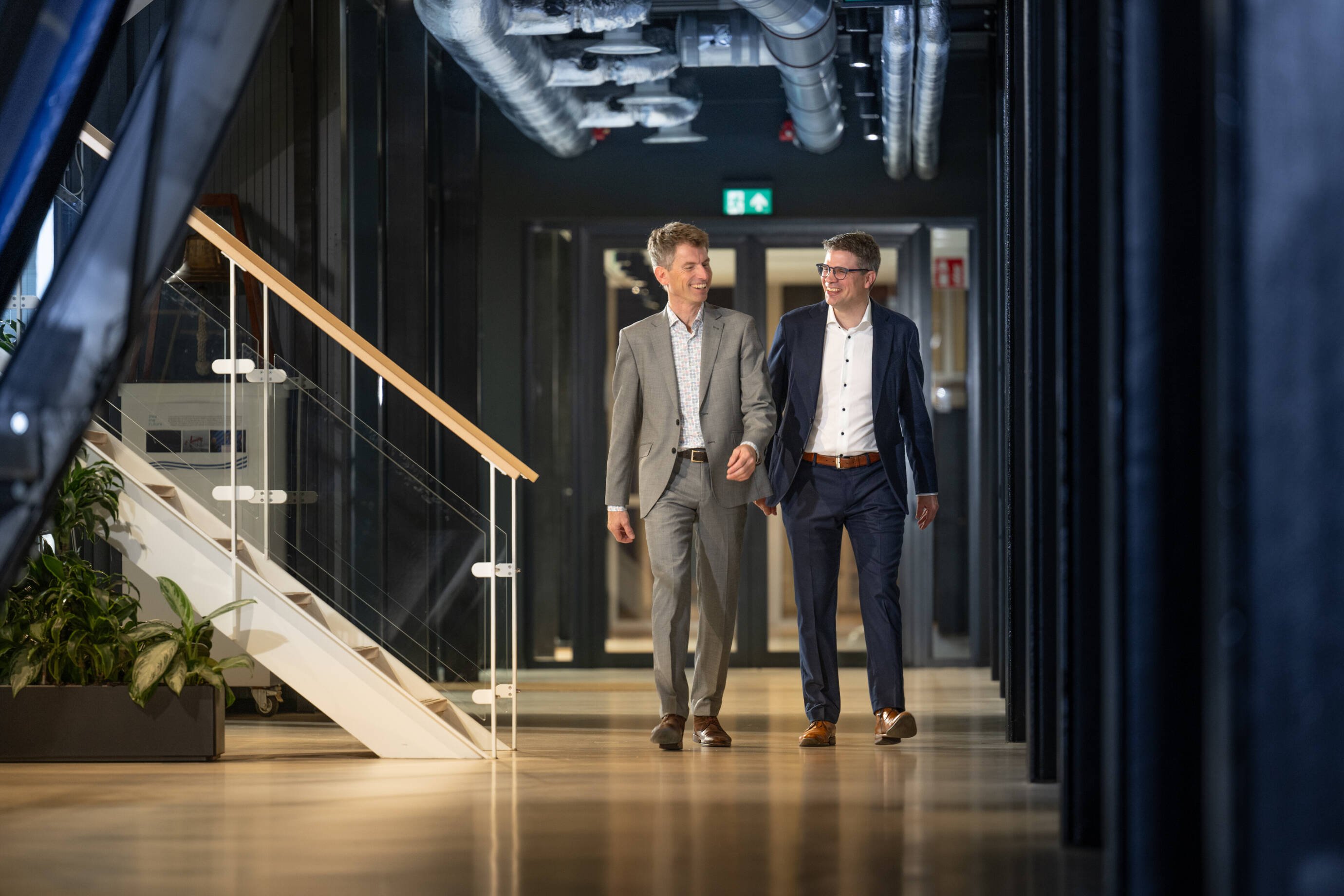
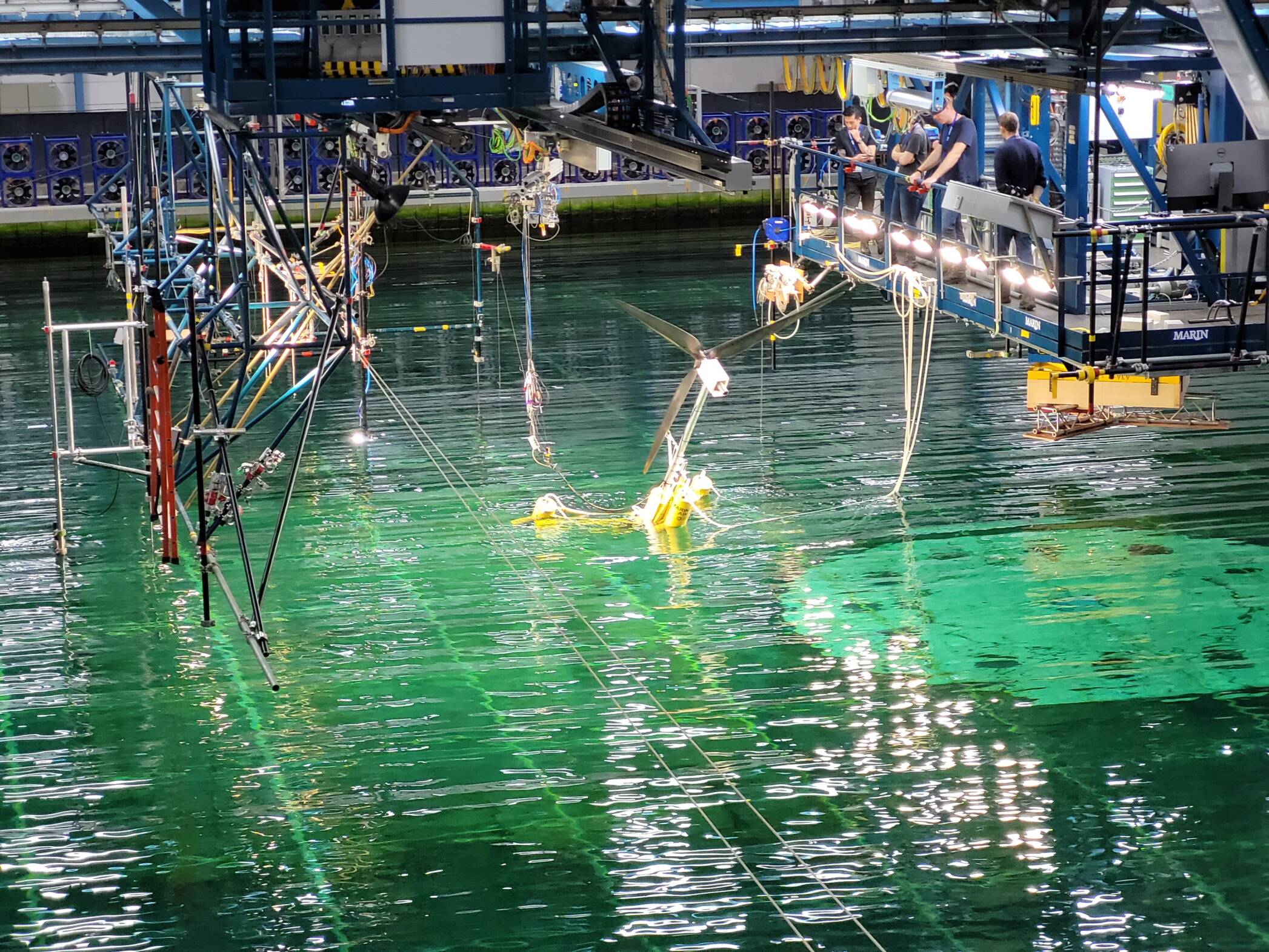
Olaf Waals (left) and Hannes Bogaert.
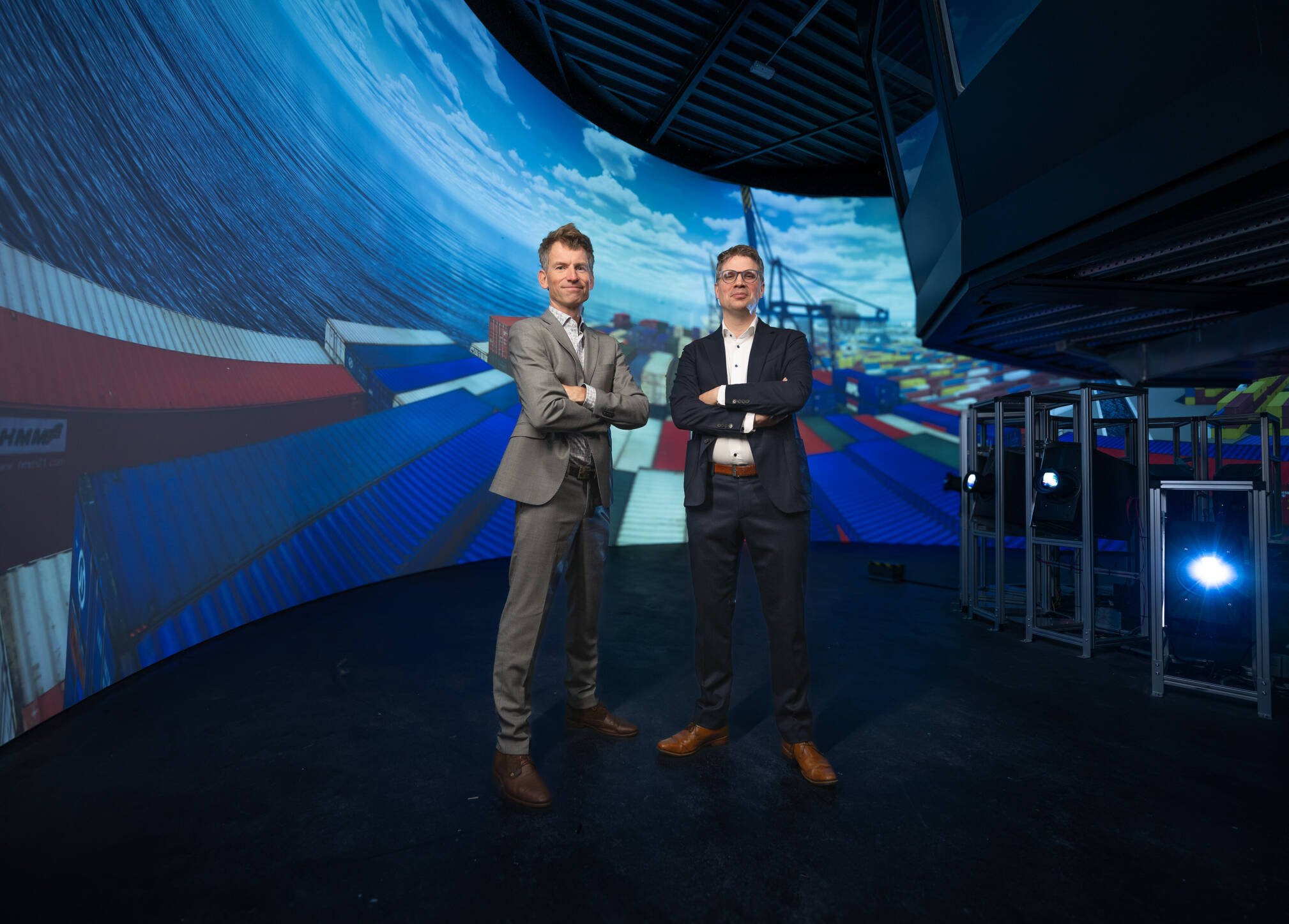

Hannes Bogaert

Olaf Waals

Better Ships, Blue Oceans
More info

www.marin.nl/sosc
October 2024, no. 142
Create a MARIN account to stay updated





Hannes says: “At the end of the day, MARIN can offer this combination, which is crucial for our clients. Our drive is really making sure we have the best knowledge of safety and efficiency, and we integrate that together with our tools.”
They understand the maritime sector is facing unprecedented challenges and many uncertainties.
“We are living in interesting times. There’s digitalisation, AI, sustainable shipping, marine
e-fuels, geopolitical tensions, clean energy at sea, food production, floating platforms…” Olaf says.
“While everyone is moving towards sustainable shipping, there are still many questions about how this can be done. Which energy saving devices? New fuels - green hydrogen, ammonia, methanol… which will be the winning fuel? And how can operators save fuel?”
Answering clients’ future questions
Clients are in a very difficult position because they do not know what the future looks like, they add.
Hannes explains: “We are always at the forefront of the industry and try to anticipate what’s going to happen. We then develop the technology and competences at MARIN to be able to answer those future questions.
“We want to help our clients and stakeholders with our expert knowledge and provide a link between the engineering part and the operational side.”
Crucially, the new directors want to make sure MARIN has an impact on the actual shipping operations. “We can help build better ships and at the same time, help to operate them in a better way!”
MARIN is the only place where everything is under one roof, Olaf points out. “The measurement facilities, the numerics, the simulator centre, the onboard SeaLab and highly experienced, specialist professionals. We are both extremely proud of our technically advanced facilities but above all, we are most proud of the cooperation with our clients and the unique MARIN team.”
Human interaction at the centre
Both stress that human interaction is increasingly at the centre of MARIN’s work. This has been a significant trend at MARIN over the last decade and will be even more important in the coming years. And this was a major reason why MARIN decided to invest in the Seven Oceans Simulator centre (SOSc).
Olaf adds: “It's not only about the technology and the ship design, but it's also about the people and how they use the ship!” The new SOSc gives MARIN the opportunity to involve the crew directly in the ship design stage and the MXLab can help explore human interaction on deck.
For both directors, MARIN is, and always should be, a place where the maritime industry can decrease risks, while increasing safety and efficiency.
In 2011, Hannes became Head of the Hydrostructural Services group and worked on monitoring projects and large-scale tests in the field of structural integrity and sloshing of LNG. In 2018, he was appointed Head of the Trials Monitoring & Department. “I always liked to do projects where actually people were maybe thinking, should we really do it?” he jokes. This included complex monitoring projects such as measuring the thrusters for a large semi-submersible.
More recently, Hannes is involved in driving the use of AI within the maritime sector such as the fascinating AI Sail Team challenge where Hannes and his colleagues asked if a computer could learn to sail an ‘Optimist’ sailboat with the help of AI. And indeed, it could.
In more recent years we also began working on innovative solutions looking into floating solar panels and floating food production, he explains. Floating islands is another of Olaf’s specialist research fields. “If we can find more ways to use floating systems and new ways to use them, we can help society. In the Netherlands for example, we have a very low-lying delta. Floating technology can be used to support cities and industrial areas to store the water, but also to make a safer solution for the entire delta. We see that for the long term this concept is being adopted in many coastal areas around the world.”
Hannes Bogaert grew up in Brugge and was always fascinated by the huge bulk carriers going into Zeebrugge and his great-grandfather was also a fisherman. Inspired to enter the maritime world, Hannes joined MARIN in 2005 to do his internship with the Trials & Monitoring Department.
One thing the new directors have in common is that they both arrived at MARIN’s headquarters in Wageningen fresh out of university and indeed both graduated as naval architects from Delft University of Technology.
Both start career at MARIN
Olaf did an internship at MARIN and then joined the Offshore Department officially in 2002. “A large part of my early career was ensuring the safety of oil and gas structures by model testing and the use of numerical models. By 2010 we also started working on renewable energies, both fixed wind and floating platforms.” After 8 years, Olaf was promoted to Head of the Offshore Department in 2010.
As MARIN President Bas Buchner steps down after 14 years at the helm, for the first time in the institute’s history his role will be replaced by two successors.
Report interviews Olaf Waals, the former Manager Offshore and Hannes Bogaert, Manager of Performance at Sea, about their new joint role and Bas about the many highlights of his career.
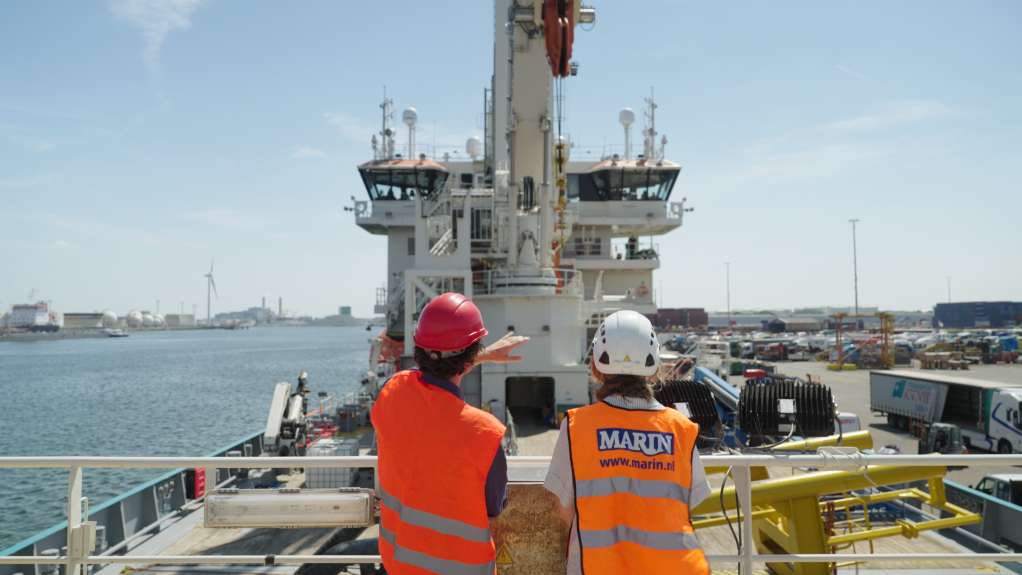
December 2024, no. 142
Reflecting on his major drive when he took on the role of President, Bas comments: “When I became President, we were a very strong hydrodynamic service organisation, and we were very good at answering clients’ questions.
“But I also realised we were answering their questions for today, but probably not for tomorrow. I hope in my time we have developed a client-oriented organisation that answers the broad maritime questions of today, tomorrow and the day after that, to make shipping more safe, smart and clean and to contribute to a sustainable use of the seas!”
Anticipating future developments
Basically, you can have all the knowledge in the world, but if it doesn't result in better ships, it is meaningless, he stresses. “We kept our hydrodynamic expertise, but broadened our research to zero emission power trains, safe and smart shipping, and maritime AI applications.
“We started with a certain development and at that moment people said, ‘you're crazy!’ this is never going to work.” But Bas points out that one of these ‘crazy’ ideas was floating wind turbines in 2003, more than 20 years ago. MARIN’s vision meant that it has been able to stimulate the sector to move in that direction. And now, 50% of the projects in its Offshore Department are related to floating wind turbines. “If we did not make that decision 20 years ago, we would not be leading this development now.”
Floating islands, floating solar cells, AI
Floating mega islands, floating solar cells, AI, are other examples. “People are starting to realise that there are possibilities. As a research institute, it's your responsibility to develop things which the industry needs now but also in the future. It’s important to stay ahead of industry, I think we have that responsibility.”
Another MARIN initiative Bas is very proud of is its work concerning the loss of containers at sea. Initially working with the Dutch Safety Board and then broadened out to the TopTier project, MARIN’s efforts culminated in the IMO changing its procedures and guidance, ultimately making the maritime industry safer.
President Bas Buchner looks back on his career, which spans more than three decades, 14 of which were in his current role. Joining MARIN directly after graduating as a naval architect, Bas outlines the many highlights of his time at the research institute.
President Bas Buchner embarks on the next chapter of his career

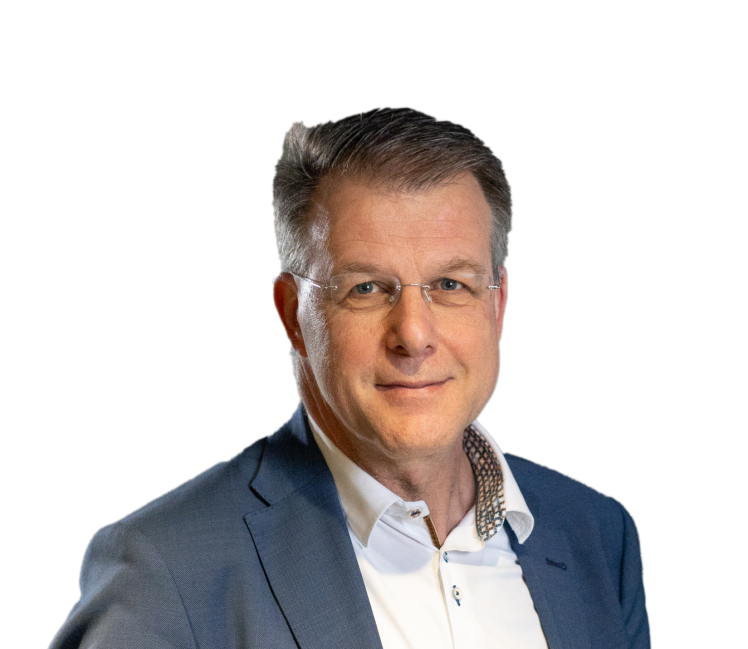
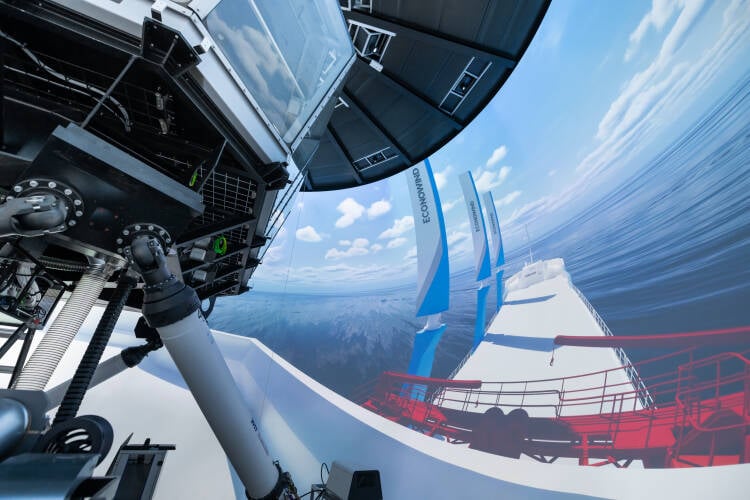
Seven Oceans Simulator centre
There are so many highlights over his 33 years, he laughs. But to name two; in 2018, MARIN performed tests for its 10,000th model and of course, the opening of the new Seven Oceans Simulator centre in May 2024.
The SOSc, Bas explains, links the high-tech side of marine hydrodynamics and simulations with the behaviour of people on board. “From a purely technology, knowledge driven institute, we have really developed towards a more crew-centred approach for smart and safe shipping. The SOSc is a link between the design of the ship and its actual operation, and the crew is in a central position. By involving the crew in the operation of the design, the resulting ship is much safer and effective.”
After many highlights and 14 years of directorship, Bas now embarks on the next chapter of his career. "I am handing over the helm of MARIN with full confidence in my successors Olaf Waals and Hannes Bogaert.”
Olaf Waals (left) and Hannes Bogaert.
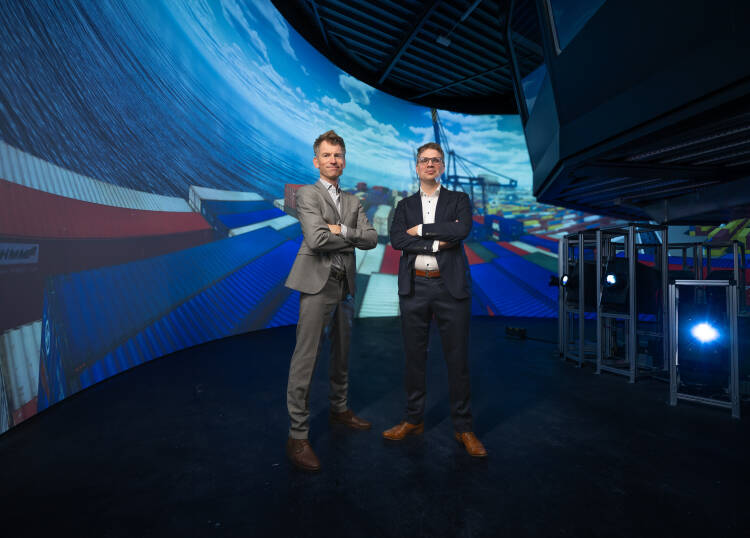
Hannes says: “At the end of the day, MARIN can offer this combination, which is crucial for our clients. Our drive is really making sure we have the best knowledge of safety and efficiency, and we integrate that together with our tools.”
They understand the maritime sector is facing unprecedented challenges and many uncertainties.
“We are living in interesting times. There’s digitalisation, AI, sustainable shipping, marine
e-fuels, geopolitical tensions, clean energy at sea, food production, floating platforms…” Olaf says.
“While everyone is moving towards sustainable shipping, there are still many questions about how this can be done. Which energy saving devices? New fuels - green hydrogen, ammonia, methanol… which will be the winning fuel? And how can operators save fuel?”
Answering clients’ future questions
Clients are in a very difficult position because they do not know what the future looks like, they add.
Hannes explains: “We are always at the forefront of the industry and try to anticipate what’s going to happen. We then develop the technology and competences at MARIN to be able to answer those future questions.
“We want to help our clients and stakeholders with our expert knowledge and provide a link between the engineering part and the operational side.”
Crucially, the new directors want to make sure MARIN has an impact on the actual shipping operations. “We can help build better ships and at the same time, help to operate them in a better way!”
MARIN is the only place where everything is under one roof, Olaf points out. “The measurement facilities, the numerics, the simulator centre, the onboard SeaLab and highly experienced, specialist professionals. We are both extremely proud of our technically advanced facilities but above all, we are most proud of the cooperation with our clients and the unique MARIN team.”
Olaf Waals

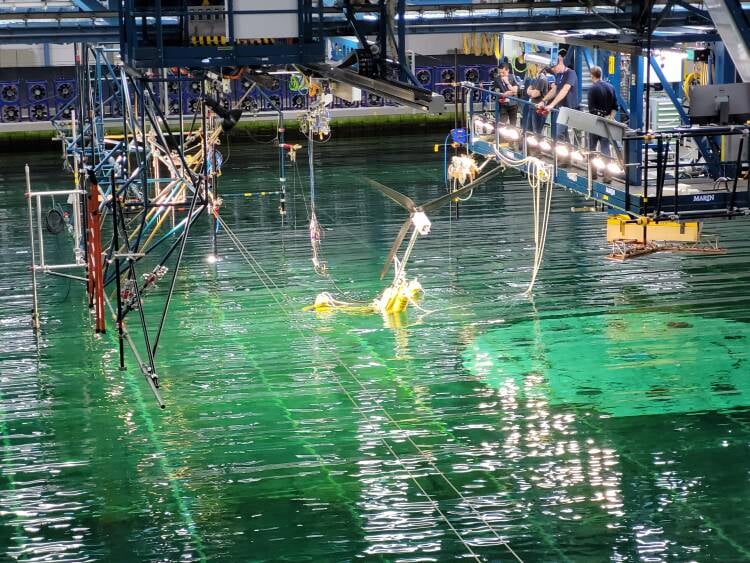
Human interaction at the centre
Both stress that human interaction is increasingly at the centre of MARIN’s work. This has been a significant trend at MARIN over the last decade and will be even more important in the coming years. And this was a major reason why MARIN decided to invest in the Seven Oceans Simulator centre (SOSc).
Olaf adds: “It's not only about the technology and the ship design, but it's also about the people and how they use the ship!” The new SOSc gives MARIN the opportunity to involve the crew directly in the ship design stage and the MXLab can help explore human interaction on deck.
For both directors, MARIN is, and always should be, a place where the maritime industry can decrease risks, while increasing safety and efficiency.
The two directors have also spearheaded the development of the BlueLabs and SeaLab. BlueLab is examining wind-assisted propulsion and the increasing scale of wind turbines, while the SeaLab aims to improve MARIN’s onboard field lab capabilities.
“Instead of only being aboard and collecting the data, step by step, we are starting to focus more on taking on an advisory role about how performance could be improved,” emphasises Hannes. “It is not just about having the data, but it is how it’s used for the design and to improve operations.”
Although the new directors will take on slightly different leadership roles, with Olaf involved with the external relationships with stakeholders and Hannes focusing on knowledge development and internal competencies, the two are very much in one line about their vision for MARIN as it approaches its 100th year.
Hannes Bogaert

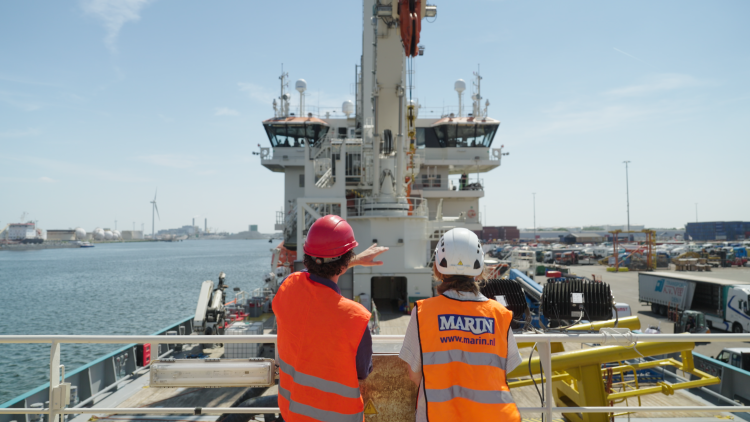
In more recent years we also began working on innovative solutions looking into floating solar panels and floating food production, he explains. Floating islands is another of Olaf’s specialist research fields. “If we can find more ways to use floating systems and new ways to use them, we can help society. In the Netherlands for example, we have a very low-lying delta. Floating technology can be used to support cities and industrial areas to store the water, but also to make a safer solution for the entire delta. We see that for the long term this concept is being adopted in many coastal areas around the world.”
Hannes Bogaert grew up in Brugge and was always fascinated by the huge bulk carriers going into Zeebrugge and his great-grandfather was also a fisherman. Inspired to enter the maritime world, Hannes joined MARIN in 2005 to do his internship with the Trials & Monitoring Department.
Introducing MARIN’s two new directors
The µMMS is not only applicable for FOWT, but also for other small floaters and ships. The new measurement system makes it possible to accurately test small vessels, without the unwanted effect of the measurement cables.
For example, this year the Dutch Ministry of Infrastructure and Water Management contracted MARIN to investigate the dynamics that are involved in the capsizing of beam trawlers. The main goal of this project was to investigate the capsize risk in relation to fishing operations and the stability criteria.
Initially, we had planned to make a free sailing model for the tests that connects to the measurement system on the carriage. The combination of a small vessel and the high wave height in the tests resulted in a model weight of less than 100 kg. Given the small model size, low forces can have an impact on the rolling behaviour of the vessel. Therefore, to minimise the impact that the cables can have on the motions of the vessel, we minimised the number of sensors on board to the bare minimum. Additionally, we planned to use thinner cables than normal to reduce the weight even further.
The µMMS became available when we were designing the model. This offered the opportunity to make the model completely wireless and to measure more signals within the budget of the project. Without the measurement wires between the carriage and the model, the test setup was more versatile. No precautions were necessary to avoid interference from the measurement cables.
In 2011, Hannes became Head of the Hydrostructural Services group and worked on monitoring projects and large-scale tests in the field of structural integrity and sloshing of LNG. In 2018, he was appointed Head of the Trials Monitoring & Department. “I always liked to do projects where actually people were maybe thinking, should we really do it?” he jokes. This included complex monitoring projects such as measuring the thrusters for a large semi-submersible.
More recently, Hannes is involved in driving the use of AI within the maritime sector such as the fascinating AI Sail Team challenge where Hannes and his colleagues asked if a computer could learn to sail an ‘Optimist’ sailboat with the help of AI. And indeed, it could.




One thing the new directors have in common is that they both arrived at MARIN’s headquarters in Wageningen fresh out of university and indeed both graduated as naval architects from Delft University of Technology.
Both start career at MARIN
Olaf did an internship at MARIN and then joined the Offshore Department officially in 2002. “A large part of my early career was ensuring the safety of oil and gas structures by model testing and the use of numerical models. By 2010 we also started working on renewable energies, both fixed wind and floating platforms.” After 8 years, Olaf was promoted to Head of the Offshore Department in 2010.
As MARIN President Bas Buchner steps down after 14 years at the helm, for the first time in the institute’s history his role will be replaced by two successors.
Report interviews Olaf Waals, the former Manager Offshore and Hannes Bogaert, Manager of Performance at Sea, about their new joint role and Bas about the many highlights of his career.
A Changing of the Guard
Report
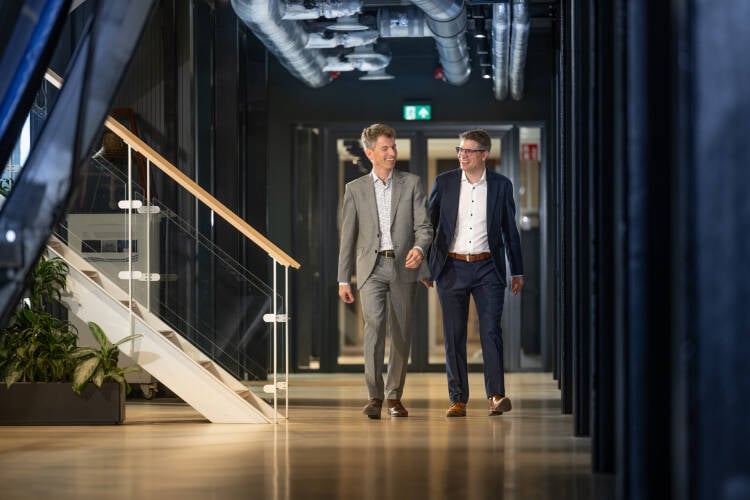
Create a MARIN account to stay updated
